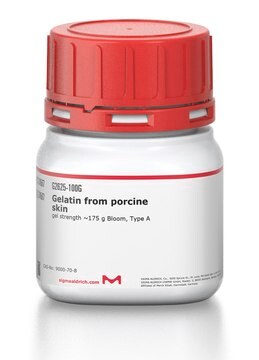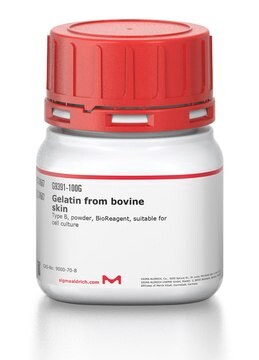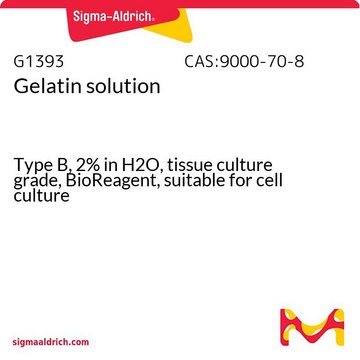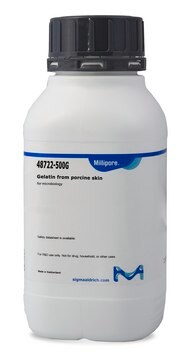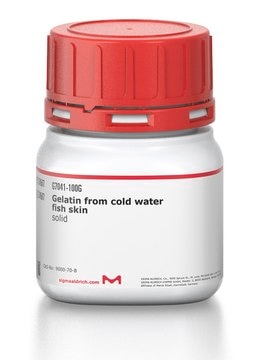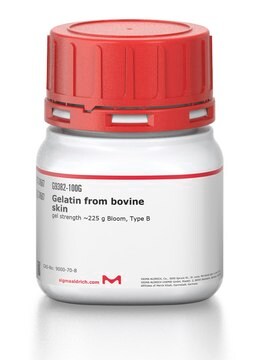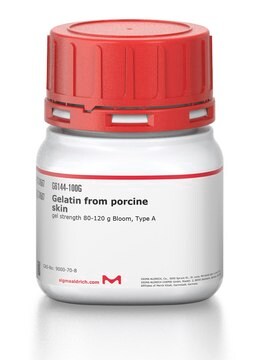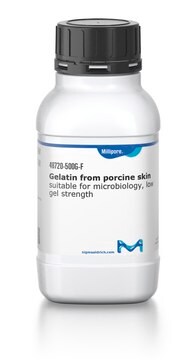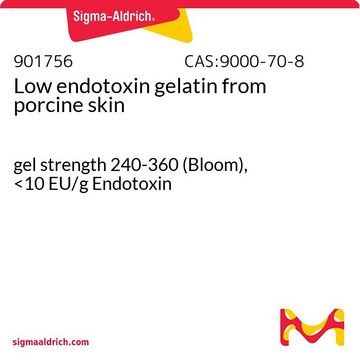G2500
Gelatin from porcine skin
gel strength 300, Type A
About This Item
Produits recommandés
Source biologique
Porcine skin
Type
Type A
Pureté
70-90% (biuret)
Forme
powder
Technique(s)
cell culture | mammalian: suitable
Résistance du gel
~300 g Bloom
Solubilité
H2O: soluble 50 mg/mL
Vous recherchez des produits similaires ? Visite Guide de comparaison des produits
Description générale
Application
- for coating glass-bottomed plates for culturing A375 cells and in gelatin degradation assay
- for coating glass slides in the histological studies with brain sections
- in the synthesis of gelatin methacrylate (GelMA) prepolymer for encapsulating cells on to 3D printed hydrogels
- to prepare thiol-functionalized gelatin (GelSH) hydrogel for 3D projection bioprinting
Actions biochimiques/physiologiques
Composants
Attention
Notes préparatoires
Code de la classe de stockage
11 - Combustible Solids
Classe de danger pour l'eau (WGK)
nwg
Point d'éclair (°F)
Not applicable
Point d'éclair (°C)
Not applicable
Équipement de protection individuelle
Eyeshields, Gloves, type N95 (US)
Certificats d'analyse (COA)
Recherchez un Certificats d'analyse (COA) en saisissant le numéro de lot du produit. Les numéros de lot figurent sur l'étiquette du produit après les mots "Lot" ou "Batch".
Déjà en possession de ce produit ?
Retrouvez la documentation relative aux produits que vous avez récemment achetés dans la Bibliothèque de documents.
Les clients ont également consulté
Articles
Discussion of synthetic modifications to gelatin, improving the three-dimensional (3D) print resolution, and resulting material properties.
Papain is a cysteine protease of the peptidase C1 family. Papain consists of a single polypeptide chain with three disulfide bridges and a sulfhydryl group necessary for activity of the enzyme.
Notre équipe de scientifiques dispose d'une expérience dans tous les secteurs de la recherche, notamment en sciences de la vie, science des matériaux, synthèse chimique, chromatographie, analyse et dans de nombreux autres domaines..
Contacter notre Service technique
